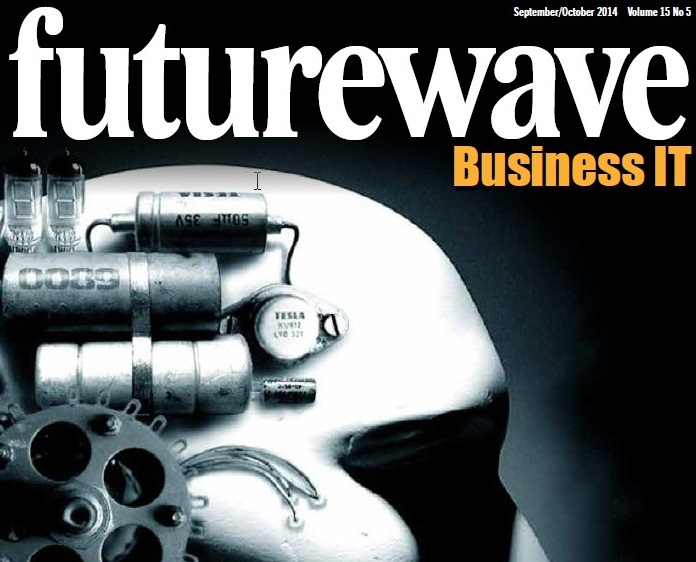Gartner, Inc. has revealed its top predictions for IT organizations and IT users for 2015 and beyond. Gartner’s top predictions for 2015 begin to examine a shift in the age old relationships between man and machine due to the emergence of digital business.
“For some time now, there has been an ongoing shift in the roles machines play in our everyday lives,” said Daryl Plummer, vice president, Distinguished Analyst and Gartner Fellow. “Compute-based machines are now being used to create an ever expanding variety of experiences that extend human endeavors. Machines are taking on more human characteristics in order to affect a more personalized relationship with human beings and we find ourselves contemplating a near-term future of a world in which machines and humans are co-workers, and possibly even co-dependents.”
 1) By 2018, digital business will require 50 percent less business process workers and 500 percent more key digital business jobs, compared with traditional models.
1) By 2018, digital business will require 50 percent less business process workers and 500 percent more key digital business jobs, compared with traditional models.
Near-Term Flag: By year-end 2016, 50 percent of digital transformation initiatives will be unmanageable due to lack of portfolio management skills, leading to a measurable negative lost market share.
The rapid evolution of social media and mobile technologies is driving consumer behavior. These behavior trends and supporting technologies will significantly change how we live and go about our daily lives; for example — refrigerators will order groceries, robots will have them collected and drones will deliver them to your door, eliminating the need for grocery clerks and delivery drivers. This new digital business environment will profoundly change business processes along with the employment demographics and the need for higher competencies both for the consumer and the providers across all industries.
2) By 2017, a significant disruptive digital business will be launched that was conceived by a computer algorithm.
Near-Term Flag: Through 2015, the most highly valued initial public offerings (IPOs) will involve companies that combine digital markets with physical logistics to challenge pure physical legacy business ecosystems.
The world economy has become ripe for digital disruption, as evidenced by global marketplace companies such as Uber and Airbnb, which are disrupting ground transportation and hotels, respectively. Since such businesses exhibit network effects (that is, their value increases with each new participant) they tend to form natural monopolies, but are challenged by very complex regulatory and marketplace dynamics, which makes them amenable to computational analysis. Meanwhile, the wealth creation upside of success in such models — valuations in the tens to hundreds of billions for companies less than five years old — represents an irresistible attraction for capital investment.
3) By 2018, the total cost of ownership for business operations will be reduced by 30 percent through smart machines and industrialized services.
Near-Term Flag: By 2015, there will be more than 40 vendors with commercially available managed services offerings leveraging smart machines and industrialized services.
Consumers’ need to get faster, cheaper, better products and services in a mode that supports any time, any place and any channel is fueling the digital business revolution. Business processes and the entire value chain of business operations will shift from a labor-driven and technology-enabled paradigm to a digital-driven and human-enabled model. Smart machines will not replace humans as people still need to steer the ship and are critical to interpreting digital outcomes. Thus, smart machines will not replace labor, rather they will displace the complacency, inefficiency and add tremendous velocity to business operations. With consumers’ preference to use Internet and mobile services to drive business efficiencies and optimize time management, every industry is striving to improve the customer experience by simplifying, automating and making more intelligent end-to-end processes, minimizing manual interventions and allowing the consumer to self-serve.
4) By 2020, developed world life expectancy will increase by 0.5 years due to widespread adoption of wireless health monitoring technology.
Near-Term Flag: By 2017, costs for diabetic care are reduced by 10 percent through the use of smartphones.
Wearable monitors hold huge promise. Today, a simple wristband can collect heartbeat, temperature and a number of environmental factors. Wireless heart monitoring patches, smart shirts and sensors in accessories promise more accuracy, choice and comfort to wearers. Transmission through wireless is straightforward. Data can be correlated against large cloud-based information repositories for sanctioned actions and through social networks for anecdotal advice. Gartner expects data from remote monitoring devices to provide continued access from patients to medical practitioners.
5) By year-end 2016, more than $2 billion in online shopping will be performed exclusively by mobile digital assistants.
Near-Term Flag: By year-end 2015, mobile digital assistants will have taken on tactical mundane processes such as filling out names, addresses and credit card information.
Fixed events such as grocery replenishment will be common and will build trust for these type of assistants to take on more. By year-end 2016, more complex purchase decisions such as back-to-school backpacks and chained events such as scheduling: a highly rated, date-type movie along with dinner and car pick up on an anniversary will be easily achievable. Yearly autonomous mobile assistant purchasing will reach $2 billion dollars annually, representing about 2.5 percent of mobile users trusting assistants with $50 a year. Digital assistants will be on multiple platforms, but mobile will be the most accessible, adopted device for digital assistants and will be the killer application by year-end 2016.
6) By 2017, U.S. customers’ mobile engagement behavior will drive mobile commerce revenue in the U.S. to 50 percent of U.S. digital commerce revenue.
Near-Term Flag: A renewed interest in mobile payment will arise in 2015, together with a significant increase in mobile commerce (due in part to the introduction of Apple Pay and similar efforts by competitors, such as Google increasing efforts to drive adoption of its NFC-enabled Google Wallet).
Increasingly powerful smartphones and tablets, and the correspondingly rich and powerful applications available for each, enable consumers and business customers to interact seamlessly with companies, content and commerce experiences at virtually all stages of the purchase process. As device manufacturers and application developers improve usability and functionality and address users’ security concerns, devices will become even more of an essential tool for customers. This is particularly true of the younger demographics. Customers who were born and grew up utilizing the Internet as a communications, information and transaction platform, and tethered to their mobile devices, will demand that service providers and retailers deliver on the expectation of connected and channel-agnostic commerce experiences.
7) By 2017, 70 percent of successful digital business models will rely on deliberately unstable processes designed to shift as customer needs shift.
Near-Term Flag: By the end of 2015, five percent of global organizations will design “supermaneuverable” processes that provide competitive advantage.
As a result of business model innovation, some business processes must now be deliberately unstable. Deliberately unstable processes refer to processes that are designed for change and can dynamically adjust according to customer needs. They are vital because they are agile, adaptable and “supermaneuverable” according to shifts in customer needs. These supermaneuverable processes exist within the context of larger, more stable processes. They are a competitive differentiator because they can support customer interactions that are unpredictable and require ad hoc decision-making to enable the larger, more stable processes to continue. They are often impossible for other competitors to duplicate. Deliberately unstable processes will mandate a drastic shift in the ability of an enterprise and its people to change in a more fluid manner. The ability to change faster will leverage the concepts of organizational liquidity. This holistic approach, blending business model, processes, technology and people will fuel digital business success.
8) By 2017, 50 percent of consumer product investments will be redirected to customer experience innovations.
Near-Term Flag: By 2015, more than half of traditional consumer products will have native digital extensions.
In many industries, hyper-competition has eroded traditional product and service advantages, making customer experience the new competitive battlefield. This is no truer than in consumer products markets, which face disproportionate commodity pressure as consumer access to pricing and product information via search and social channels undermine brand loyalty. The reality is that focusing innovation on new products — and even new business models — is subject to shrinking periods of competitive advantage. Competitors and alternatives abound and product innovation is subject to accelerating commoditization. Customer experience innovation remains the secret to lasting brand loyalty.
9) By 2017, nearly 20 percent of durable goods e-tailers will use 3D printing (3DP) to create personalized product offerings.
Near-Term Flag: By 2015, more than 90 percent of durable goods e-tailers will actively seek external partnerships to support the new “personalized” product business models.
3DP is already having a profound impact on enabling startups to reduce infrastructure costs, compared with existing traditional manufacturing processes. As consumers increasingly show an appetite to control more product features and capabilities, e-tailers are recognizing the business potential of moving from “configurable” products to “personalized” made-to-order products enabled by 3DP. Almost every single durable goods category will see a surge in 3DP-enabled personalization and manufacturers will develop capabilities for bringing the consumer closer to the design experience. The companies that set the strategy early will end up defining the space within their categories. This requires a corporate culture that is supportive of nonconformance products, new front office “concierge” business capabilities, and back office IT and operations skills. It will require a new agility that goes beyond rigid process automation, and may require entirely new business systems.
10) By 2020, retail businesses that utilize targeted messaging in combination with internal positioning systems (IPS) will see a five percent increase in sales.
Near-Term Flag: By 2016, there will be an increase in the number of offers from retailers focused on customer location and the length of time in store.
Digital marketers are increasingly focusing on mobile advertising and advanced analytics to take advantage of the rich opportunities presented by the growth of mobile device usage. Context is playing an increasingly central role in these efforts, enabling highly targeted ads based on recent purchases, buying habits, city of residence and interests. But amid all of this data, a customer’s current location is among the most important of contextual cues available. Mapping is being exploited by digital marketers, but is still used in relatively simple ways. Recently, however, indoor positioning systems have become increasingly viable. Rather than using satellites, these systems use low-energy Bluetooth beacons and Wi-Fi access points to pinpoint a mobile device’s location inside a building, with accuracies in the centimeter range. Support within newer mobile devices for IPS will enable location cues for targeted ads and messages, and real-time mapping to lead customers not only to store locations, but to specific products themselves.

